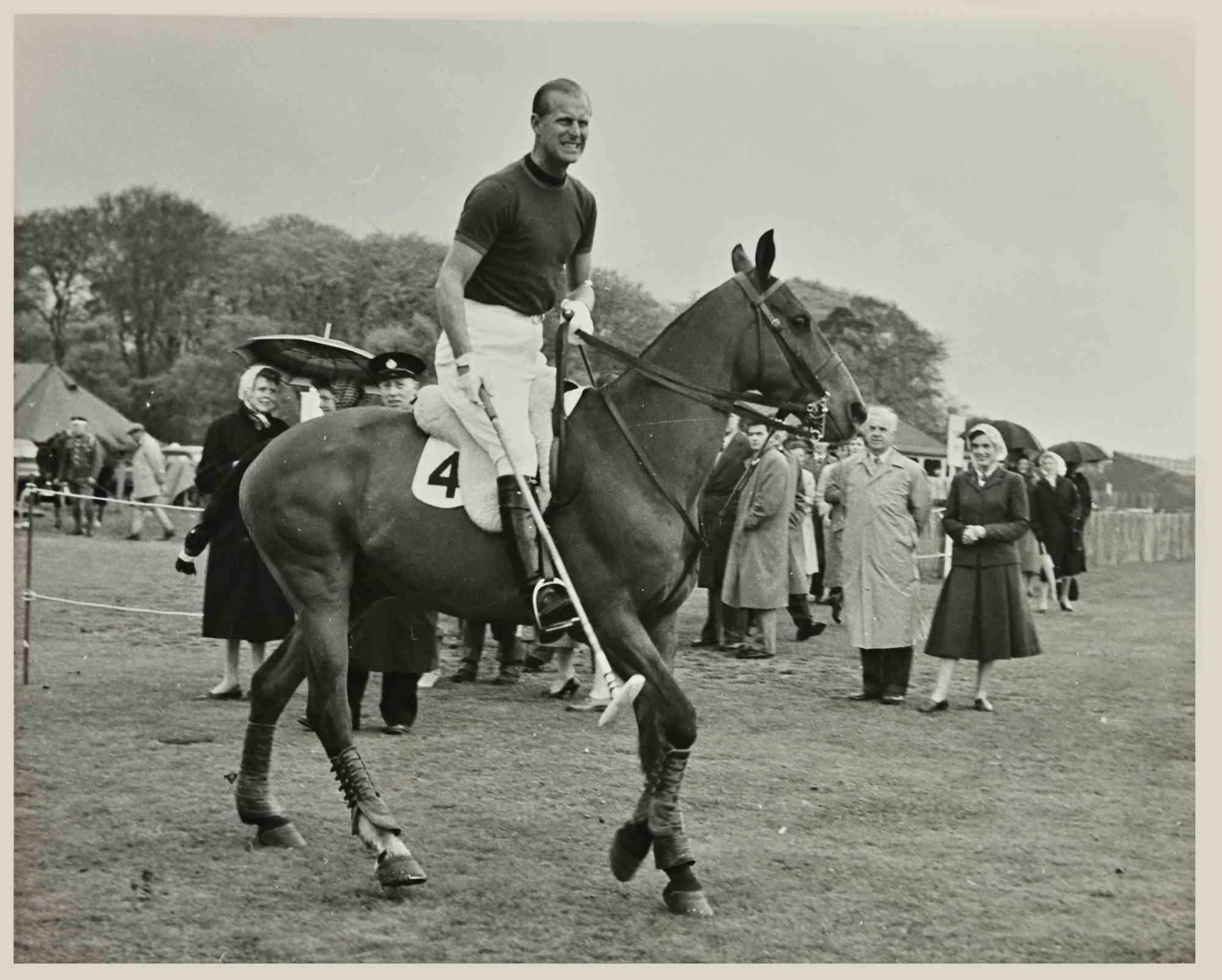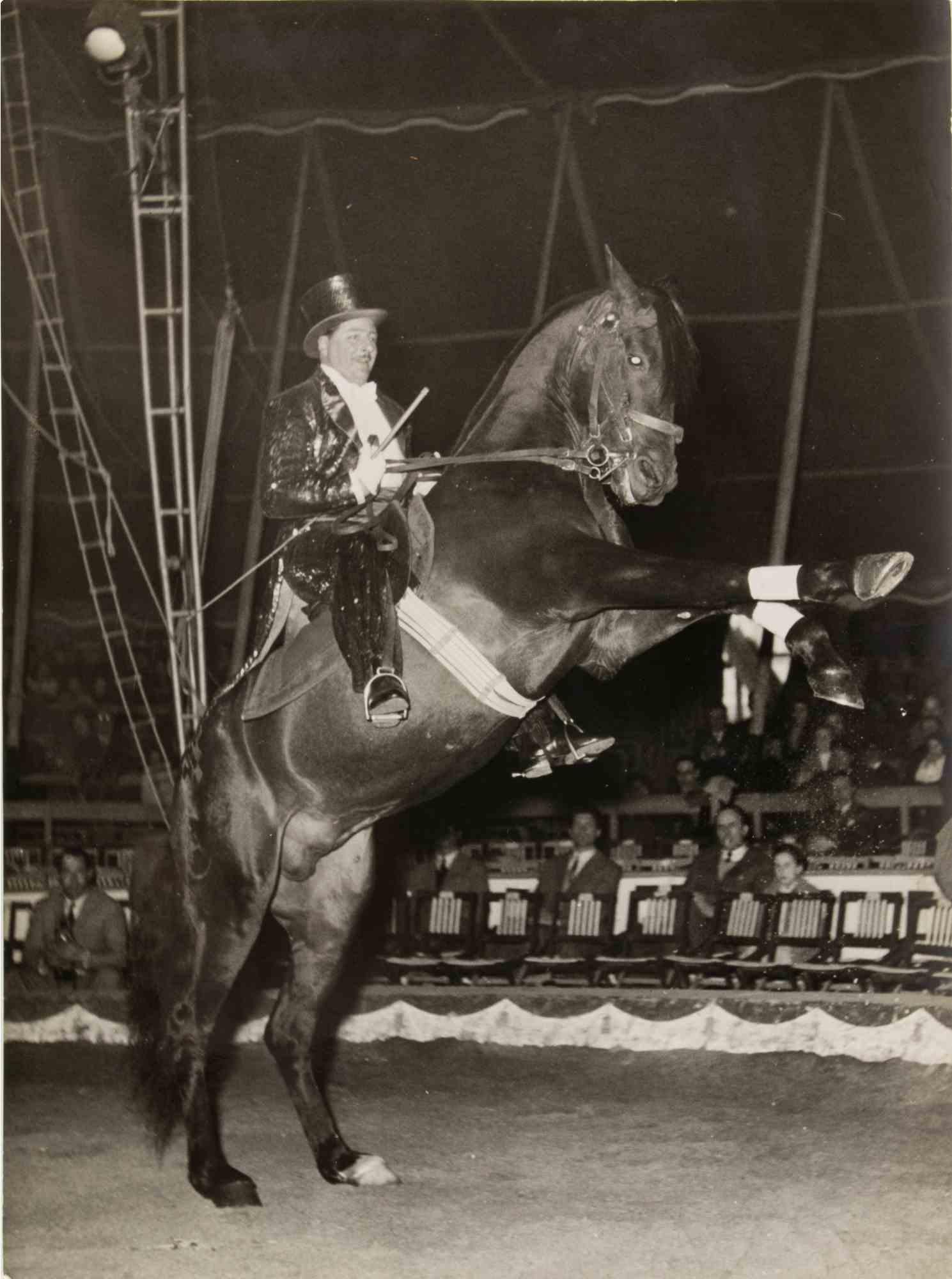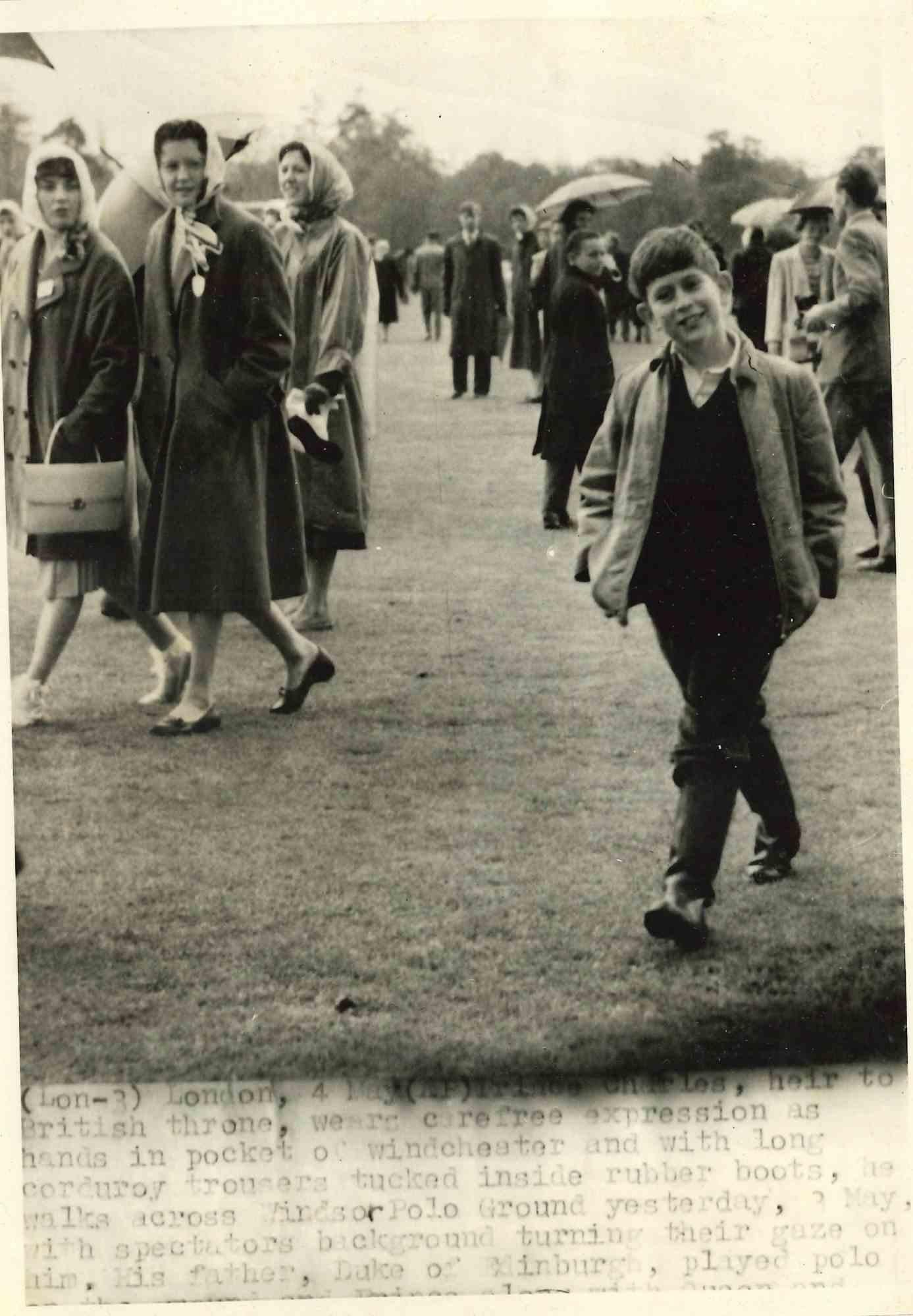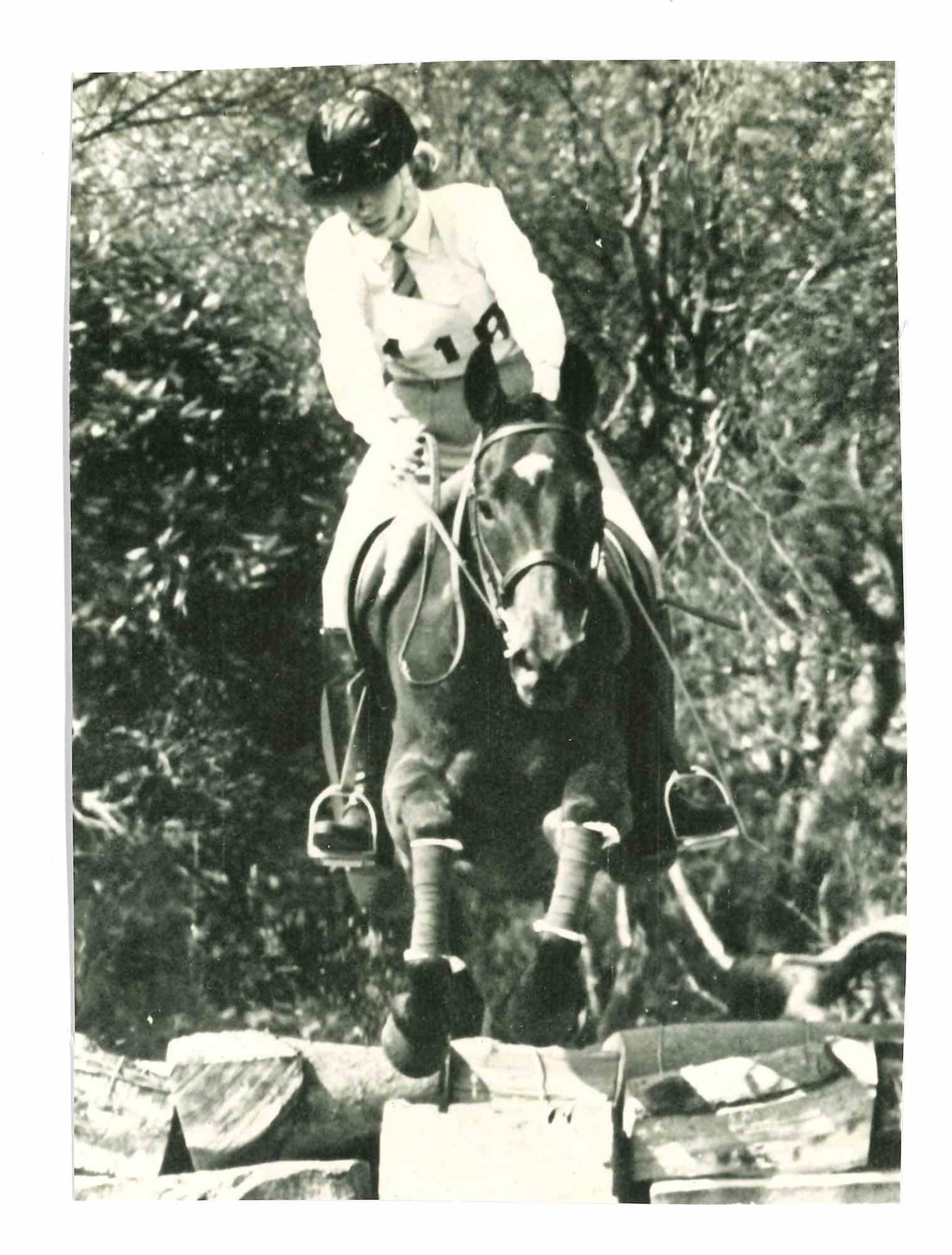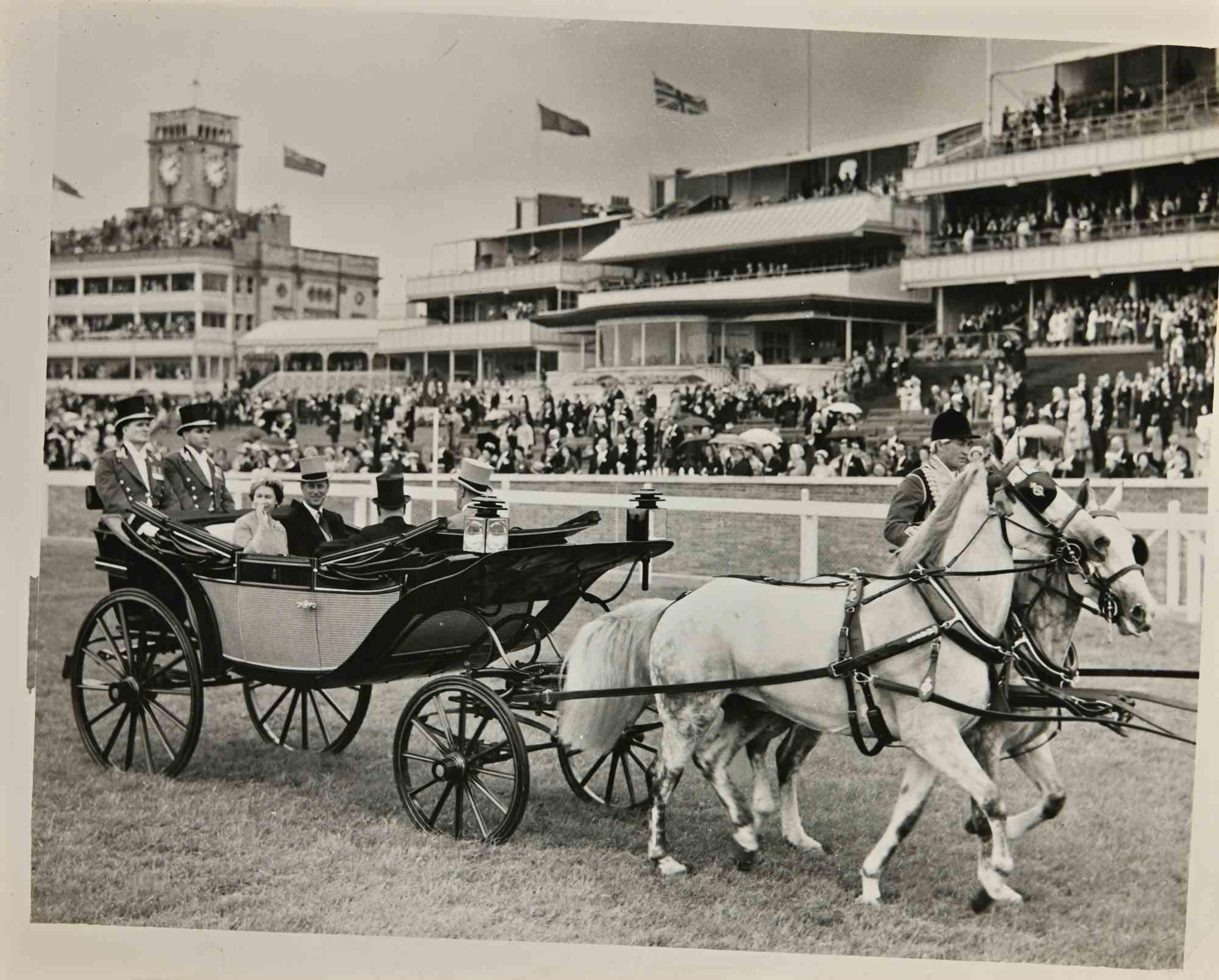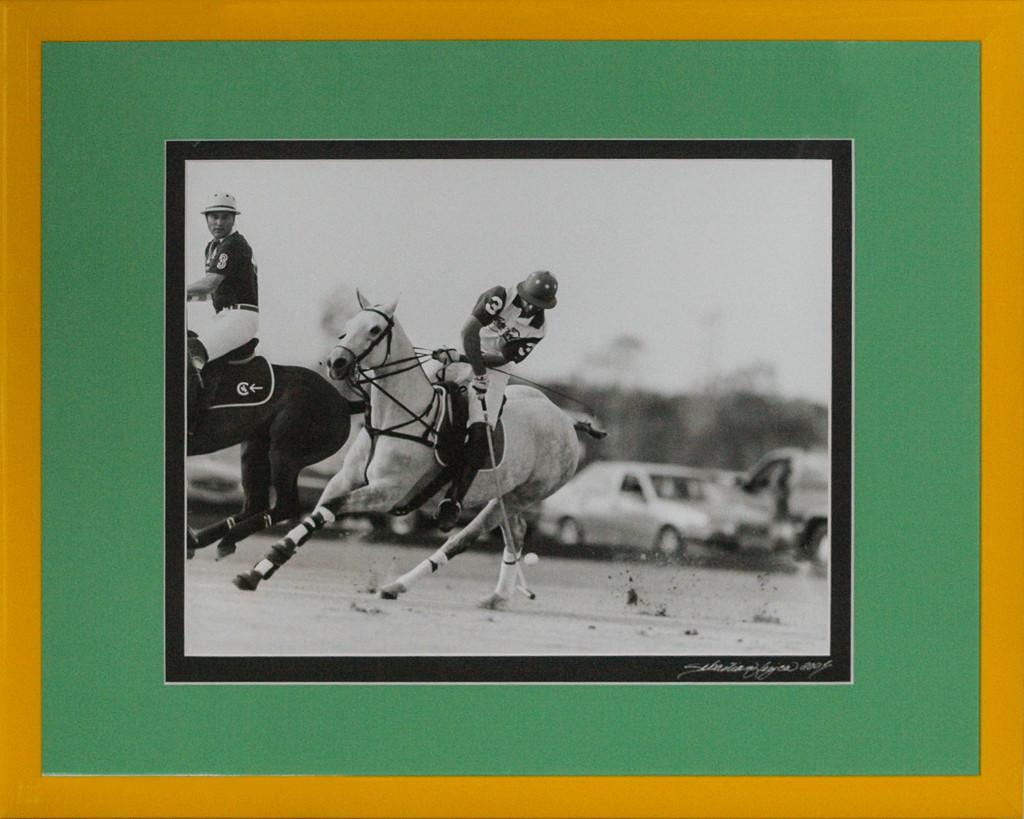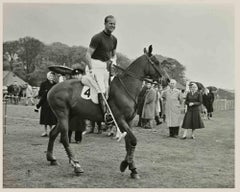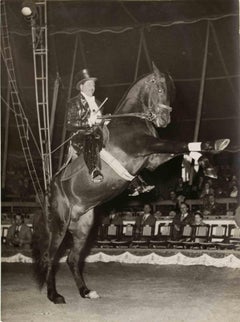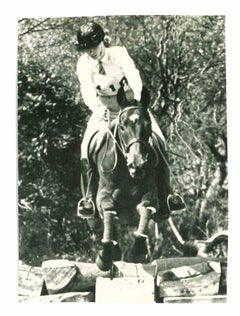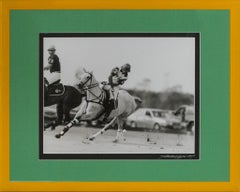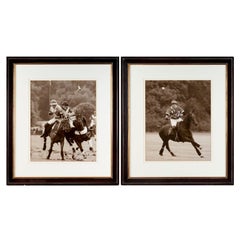Items Similar to Prince Carlo plays Polo - Vintage Press Print - 1962
Want more images or videos?
Request additional images or videos from the seller
1 of 3
UnknownPrince Carlo plays Polo - Vintage Press Print - 19621962
1962
$142.27
£106.47
€120
CA$196.28
A$218.27
CHF 114.64
MX$2,668.53
NOK 1,428.51
SEK 1,346.70
DKK 913.50
About the Item
Prince Carlo plays Polo is a black and white vintage press print, realized in April 23th 1962
The photo depicts an official moment of the English Crown. Prince Carlo took his first few experimental swings watched by the Queen mother.
Good conditions and aged.
It belongs to a historical and nostalgic album including historical moments, places, families, artworks, royal families, and political events, to be meticulously captured on camera.
Copyright by AP Wirephoto.
- Creation Year:1962
- Dimensions:Height: 7.09 in (18 cm)Width: 5.12 in (13 cm)Depth: 0.04 in (1 mm)
- Medium:
- Movement & Style:
- Period:
- Framing:Framing Options Available
- Condition:Insurance may be requested by customers as additional service, contact us for more information.
- Gallery Location:Roma, IT
- Reference Number:Seller: T-1515241stDibs: LU650315424022
About the Seller
4.9
Platinum Seller
Premium sellers with a 4.7+ rating and 24-hour response times
1stDibs seller since 2017
7,682 sales on 1stDibs
Typical response time: 3 hours
- ShippingRetrieving quote...Shipping from: Grasse, France
- Return Policy
Authenticity Guarantee
In the unlikely event there’s an issue with an item’s authenticity, contact us within 1 year for a full refund. DetailsMoney-Back Guarantee
If your item is not as described, is damaged in transit, or does not arrive, contact us within 7 days for a full refund. Details24-Hour Cancellation
You have a 24-hour grace period in which to reconsider your purchase, with no questions asked.Vetted Professional Sellers
Our world-class sellers must adhere to strict standards for service and quality, maintaining the integrity of our listings.Price-Match Guarantee
If you find that a seller listed the same item for a lower price elsewhere, we’ll match it.Trusted Global Delivery
Our best-in-class carrier network provides specialized shipping options worldwide, including custom delivery.More From This Seller
View AllPrince Philip of Edinburgh - Vintage Photograph - 1960s
Located in Roma, IT
Prince Philip of Edinburgh is a vintage photograph realized in the 1960s.
Good conditions.
The artwork is depicted in a well-balanced composition.
Category
1960s Modern Figurative Photography
Materials
Photographic Paper
The Horse Trainer - Vintage Photograph - 1950s
Located in Roma, IT
The Horse Trainer is a black and white vintage photo, realized in 1950s.
Good conditions and aged.
It belongs to a historical and nostalgic album including historical moments, plac...
Category
1950s Contemporary Figurative Photography
Materials
Photographic Paper
Young Prince Charles - Vintage Photo - Mid 20th century
Located in Roma, IT
Young Prince Charles - Vintage press print realized in the 1950s.
Good conditions and aged.
Category
Mid-20th Century Contemporary Figurative Photography
Materials
Photographic Paper
Historical Photo - Princess Ann - 1960s
Located in Roma, IT
Historical Photo - Princess Ann is a black and white vintage photo, realized in the 1960s. It belongs to historical album including photo reportages of historical moment and politica...
Category
1960s Contemporary Figurative Photography
Materials
Photographic Paper
Queen Elizabeth II and Prince Philip - Photograph - 1958
Located in Roma, IT
Queen Elizabeth II and Prince Philip is a vintage photograph realized in the 1958.
Good conditions.
Stamped on the rear.
Category
1960s Contemporary Figurative Photography
Materials
Photographic Paper
Lord Snowdon - Vintage Photograph - 1973
Located in Roma, IT
Lord Snowdon is a vintage black and white Photograph realized in 1973.
Good conditions.
The copyright on the rear.
Category
1970s Contemporary Figurative Photography
Materials
Photographic Paper
You May Also Like
'Polo Match' c2001 B&W Framed Photo by Sebastian Lezica of Argentina
Located in Bristol, CT
Polo match showing two players signed & dated 2001 by Argentine photographer, Sebastian Lezica
Photo Sz: 10 1/2"H x 13 1/2"W
Frame Sz: 17 1/2"H x 21 1/2"W
Category
Early 2000s Photography
Materials
Photographic Paper
Large Framed Black and White Action Photographic Prints of World Polo League
Located in Morristown, NJ
20th c., black and white photographic prints, matted and framed under glass. A pair of polo action shots that capture the intensity of play and the agility of player and polo pony al...
Category
Late 20th Century Unknown Modern Photography
Materials
Glass, Wood, Paper
"Palm Beach Polo" Charcoal c1951 Drawing By Jack Lorraine
Located in Bristol, CT
Art Sz: 18"H x 14"W
Frame Sz: 22 1/2"H x 18 1/2"W
Classic charcoal drawing of a polo player signed Jack Lorraine & dated Palm Beach 1951
M...
Category
1950s Drawings and Watercolor Paintings
Materials
Charcoal
Polo Players B&W Framed Photo by Sebastian Lezica of Argentina
Located in Bristol, CT
Image Sz: 10 1/2"H x 13 1/4"W
Frame Sz: 17 1/2"H x 21 1/2"W
B&W photo of 2 polo players
c2001
Category
21st Century and Contemporary Black and White Photography
Materials
Photographic Paper
Jackie Kennedy; horse-riding, ca. 1970s
Located in Cologne, DE
Jacqueline Lee "Jackie" Kennedy Onassis (July 28, 1929 – May 19, 1994) was an American socialite, writer, and photographer who became First Lady of the United States as the wife of P...
Category
1970s Modern Black and White Photography
Materials
Black and White, Silver Gelatin
"French Polo Match" 1958 by Louis Claude
By Louis Claude
Located in Bristol, CT
Colour c1958 'Polo' engraving by Louis Claude pencil signed (LR)
Print Sz: 18 1/2"H x 23 1/4"W
Frame Sz: 28"H x 32"W
w/ French matte
Category
1950s Prints and Multiples
Materials
Lithograph
More Ways To Browse
Royal Prince
Polo Prints
Royal Vintage Watch
1962 Watch
Vintage Polo Watch
Suspended Sculptures
Modern Large Tapestry
Picasso Chicago
Abstract Outdoor Sculpture
Travel Mirror
Fine Art In Plaster
Red And Black Poster
Circus Sign
Impact 2000
Japanese Painting Tree
Lithographs Pablo Picasso 1969
Vintage Lake Prints
The Clown
